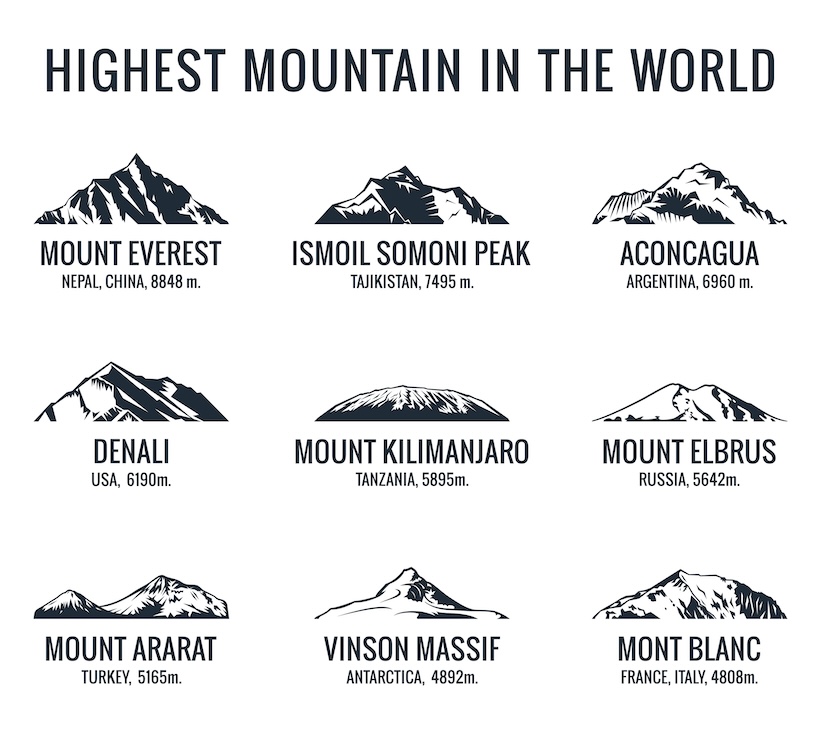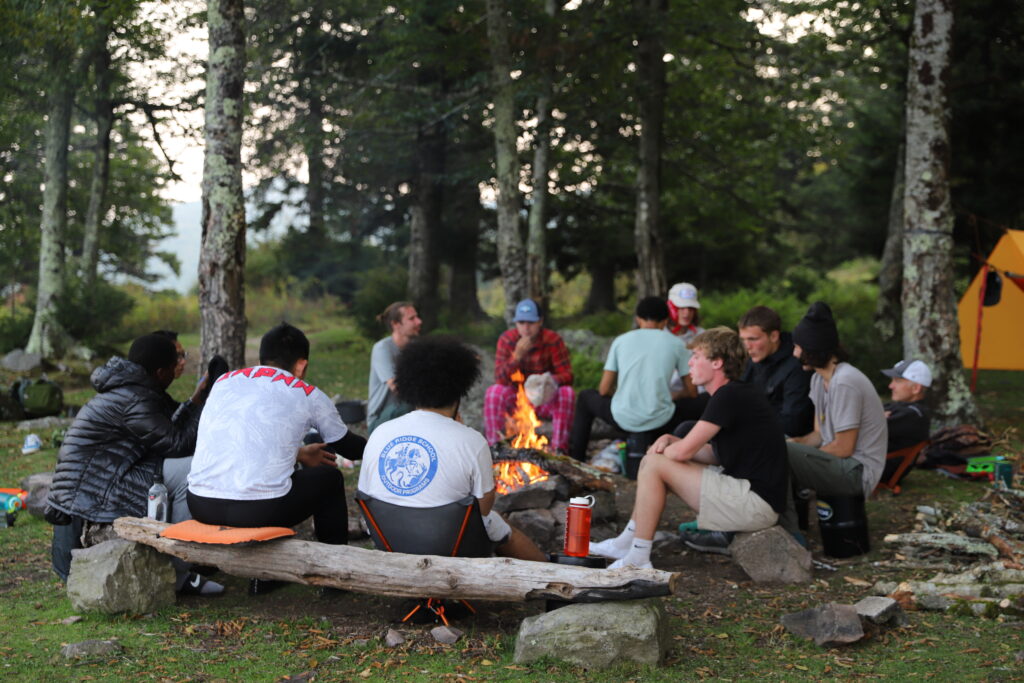Oxygen at Altitude is a Major Consideration in Wilderness Medicine
Wilderness MedicineWilderness medicine covers an enormous area of study and practice. From anaphylaxis to zoonotic diseases, it covers a lot of glossary. From deep-water diving to high-altitude mountaineering, it covers a lot of territory including oxygen deprivation.

Mountain tourist vector logos set. Adventures Icon mount. Highest mountain in world. Everest and Ismoil Somoni Peak, Aconcagua, Denali, McKinley, Kilimanjaro, Elbrus, Ararat, Vinson Massif, Mont Blanc
In this post about wilderness medicine, we focus on four terms in that glossary to which every outdoor educator and backcountry/wilderness guide should be aware:
Oxygen is a gas comprised of two oxygen molecules bound together (O2), that’s essential for the survival of most earthly lifeforms. You can live without food for several weeks, without water for several days, but only a few minutes without oxygen.
Atmosphere is the gaseous mass that surrounds a celestial body like Earth. Earth’s atmosphere is composed of about 78 percent nitrogen, 21 percent oxygen, 0.93 percent argon, and 0.04 percent carbon dioxide, along with trace amounts of other gases and variable water vapor. This gaseous “envelope” is divided into layers ranging from the troposphere to the thermosphere, with the percentage of oxygen remaining the same in each of those layers. (more…)
Campfires Should Be Designed to Delight — and then Disappear
Leave No TraceLittle in the wilderness experience quite compares to sitting around a warm campfire after a day on the trail. Crackling embers, shimmering luminescence, and radiant warmth have an almost primal attraction.
When you take advantage of our teen leadership expeditions, adult leadership expeditions, or our high school summer semester, you’ll experience many campfires.
Whether you’re toasting marshmallows, sharing stories, debriefing the day’s group-based activities, or simply gazing into the glow, a campfire creates an intimate connection to nature, to others, and to oneself.

For those of us who work in outdoor education and adventure-based programming, the impact of a campfire on our students must include consideration of the environmental impact of these moon-lit activities. In this blog post, we explore why people are so drawn to campfires and then we share tips on how to enjoy them without leaving a lasting trace.
Appreciating the Appeal of Campfires
People are naturally drawn to campfires, and for good reason — actually several good reasons. Here are some of the qualities that make campfires so alluring (more…)
Just the Facts: Recognizing the Importance of Reporting Accurate Information in a Wilderness Emergency
Wilderness MedicineIn the movie Die Hard 2, hero John McLane, played by Bruce Willis, receives a fax at a car rental kiosk at Dulles International Airport in Washington, D.C. informing him of the identity of a suspect. The agent behind the desk, who’s been flirting with McLane through the entire scene, says, “Hey, I close in about an hour. Maybe we can go get a drink?” McLane smiles coyly, points to the wedding ring on his finger, and replies, “Just the fax, ma’am. Just the fax.”

McLane’s line is a reference to the old TV show Dragnet, where the main character, Sgt. Joe Friday, would remind rambling or opiniated witnesses to stick to the facts by saying, “Just the facts, ma’am [or sir]. Just the facts.” That straight-forward statement can serve as a reminder for wilderness medicine providers when we’re responding to accidents or emergencies in remote settings.
In wilderness emergency medicine, collecting and reporting the facts can determine the difference between a positive and a negative outcome, or even between life and death.
Recognizing the Challenges of Reporting Accurate Information in Wilderness Medicine
In wilderness settings, the potential for communicating inaccurate information increases due to several factors, including distance, time lags, layers of patient care providers, and unreliable communication channels, including the absence of cell phone connectivity. First responders frequently face the daunting task of gathering information from people in stressful situations under challenging and changing conditions. In our wilderness medicine course, we teach about the importance of accurate information.
In addition, location information can be difficult to obtain and communicate. Even in an urban setting, first responders can have trouble distinguishing between similarly named roads, such as Bear Hollow Lane and Bear Hollow Road, or roads that have multiple names. In the wilderness, determining and communicating a specific location becomes even more challenging when certain ridges, pitches of a rock climb, or similarly named streams come into play.
Providing accurate and comprehensive information is important for several reasons, including the following: (more…)
TALK TO US
Have any further questions about our courses, what you’ll learn, or what else to expect? Contact us, we’re here to help!